We are at the penultimate month of the Mini Masterpieces quilt along! This month, we’re branching out into some hand sewing with English Paper Piecing. English paper piecing, also known as EPP, is the method of temporarily basting fabric to a small paper shape, and hand sewing the shapes together to create a larger design. Sometimes it’s making little blocks and appliqueing it to a background fabric, and sometimes it’s creating a whole panel or quilt! Both methods are demonstrated in this chapter of Mini Masterpieces.
BUY THE BOOK
If you’re wanting to get your hands on a copy of Mini Masterpieces for yourself, I have signed copies of Mini Masterpieces available in store.
FEBRUARY – ENGLISH PAPER PIECING
I have found that English paper piecing is one of those quilting techniques that you will either love or not. There are those who are mad keen EPPers and choose it over machine piecing all the time. There are those who happily dabble in both and love a good EPP project for an evening in front of Netflix or while travelling.
And then there are those who have tried it and can do it, but don’t choose to use it often. If I’m 100% honest, I fall into that last category! There are times when I’ve enjoyed it, but my EPP stamina truly is only for small doses with smaller projects if I want to have any hope of completing it rather than adding to my WIP pile. I’d say about once or twice a year I’ll get the itch to have a hand-sewing project, especially in winter when I want to cosy up under a quilt on the sofa.
But! I also firmly believe that it’s important to try everything at least once, and to give it a really good go so that you can make a properly informed decision about the technique.
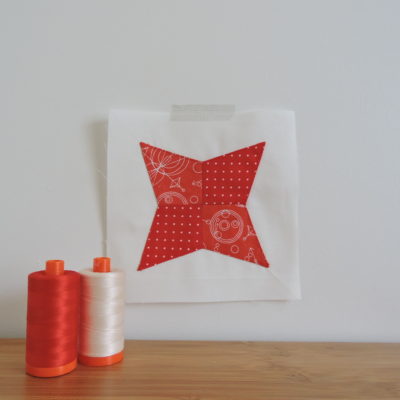
The English Paper Piecing sampler block is great for:
- Trying EPP for the very first time!
- Practising basting English paper piecing shapes
- Practising hand-sewing
Image by Page + Pixel for Lucky Spool
The Carpenter’s Diamond mini quilt is also good for trying out:
- Fussy cutting with English paper piecing
- Working with
FEBRUARY PRIZES
To enter, you can either post a photo of your month’s project in the Blossom Heart Quilts group on Facebook in this album here (not sure how to do that? Click here to find out how), or post it on Instagram using the QAL hashtag #MiniMasterpiecesQAL. Either method is acceptable, just be sure to do it by February 28, 2021 (in your timezone). Monthly winners will be selected at random, and announced by updating this post + in the Facebook group on March 3, 2021.
For all the QAL details including prize eligibility, read this post here.
Block Prize
If you’re sewing along making the sampler blocks this year, that’s awesome! Each month, there’ll be a mix of patterns, notions, and other little goodies on offer. This month, the prize is a copy of the Hexie Handbook from Tales of Cloth.
Quilt Prize
If you’re making mini quilts or some other type of fully finished product with the mini quilt pattern or turning the sampler block into a finished product (pillow, bag, zippered pouch, etc), this month’s prize is a fat quarter bundle of Marrakesh Fusion by Art Gallery Fabrics.
WINNERS
Congratulations to Kathryn Langston, who added some feature stitching to applique her block.
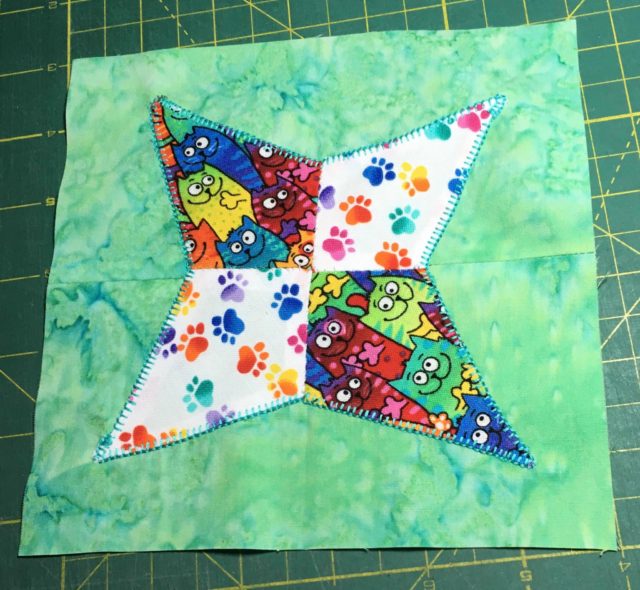
And the black corners of this mini, which really make the centre pop, makes Cherie Goyer a winner too!
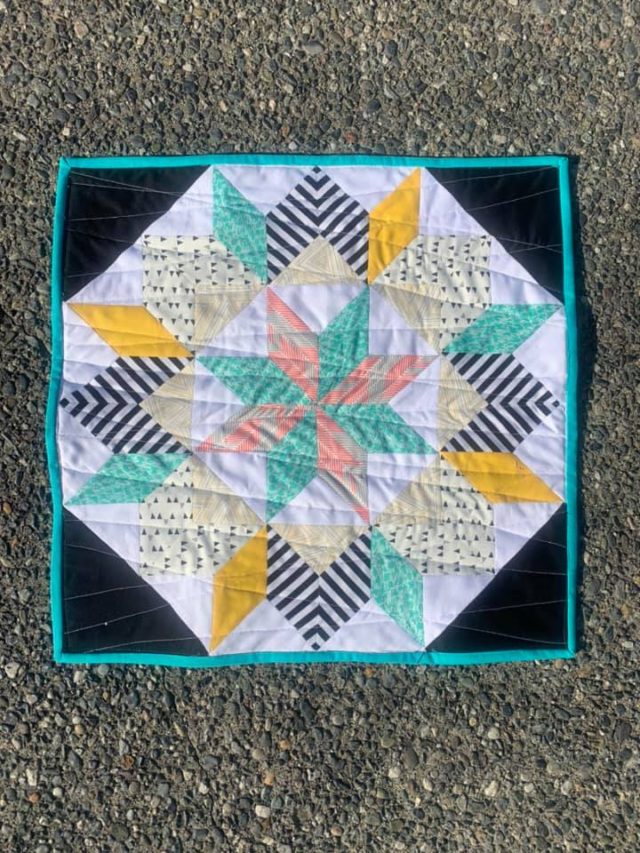
What you need
- A copy of Mini Masterpieces – you can buy a copy from these various stockists, and signed copies from me here
- A sewing machine (or hand sewing supplies!) and basic quilting supplies
- Your favourite fabrics – all the fabric requirements are listed on pages 85-88 for the block and mini quilt
- Washable glue stick – the smaller the stick, the easier to use, which is why I recommend the sewing glue pens. But a small school glue stick will also work.
- Size 9 milliners or straw needles
- Templates – copy the templates included in the book, or purchase a set of the papers for the Carpenter’s Diamond mini quilt in my shop here
Recommended
- Cuticle stick – these are really helpful for getting the papers out at the end with their pointed+flat tips! But your fingers or a chopstick will also work.
- Fabric-safe erasable marking pen – useful to mark the seam allowances for cutting, especially if you’re wanting to fussy cut the fabric
TIPS FOR ENGLISH PAPER PIECING
The biggest tip that I can share is to not stress about your stitches showing. You are hand sewing this thing, be proud of your literal handiwork!
English paper piecing sampler block by @talesofcloth
If you’d like to make the stitches as camouflaged as you can, choose a 50w thread in a soft neutral that closely matches the fabric you are working with. And if you don’t have something super close, a soft grey or even a pale pink or blue will work with almost anything; something that just blends into the background.
English paper piecing is also a great chance to play around with fussy cutting. Whether it’s something simple like using a stripe in the same orientation for each piece, or getting really clever and creating a kaleidoscope effect like Sharon did below, have some fun! If you’re new to fussy cutting, I’d recommend tracing the EPP template shape onto some clear template plastic to help you more clearly see what you’re working with on the fabric.
English paper piecing sampler quilt block by @lilabellelanecreations
If you have any questions, don’t hesitate to leave them in the comments and I’ll respond to you there.
This post contains affiliate links, thanks for your support.
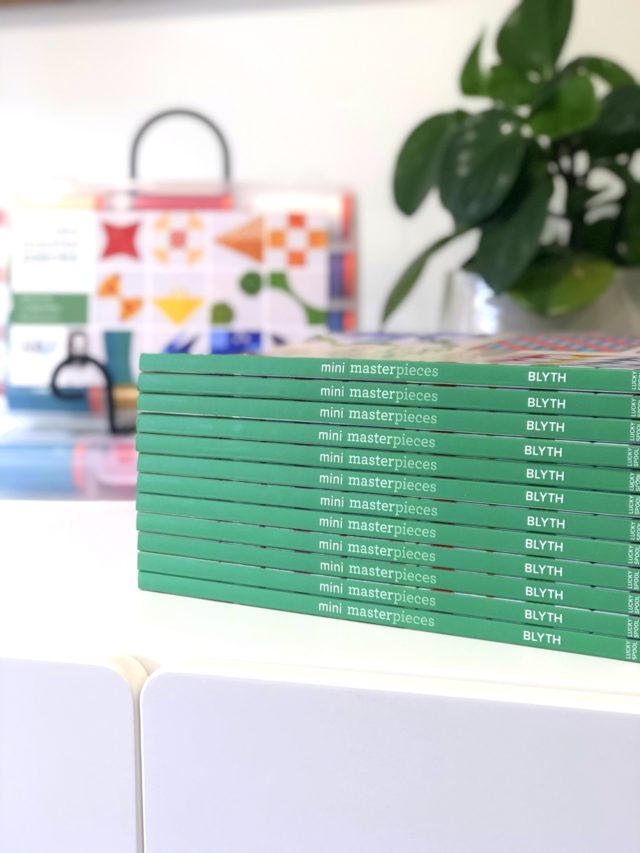
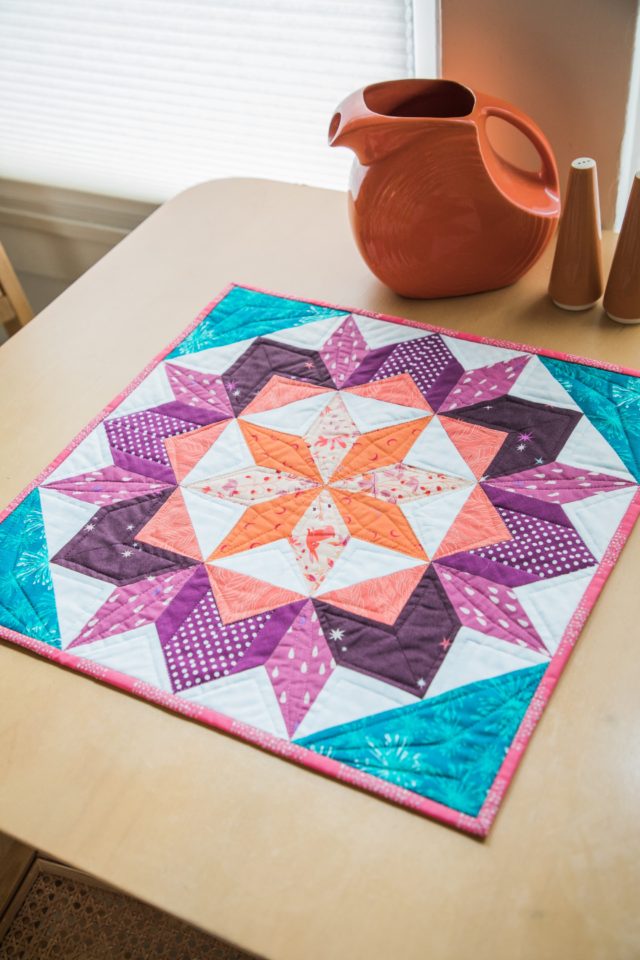
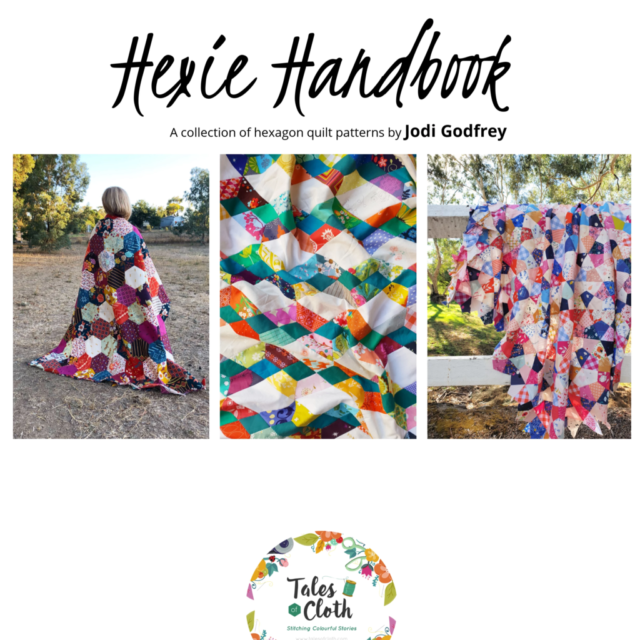
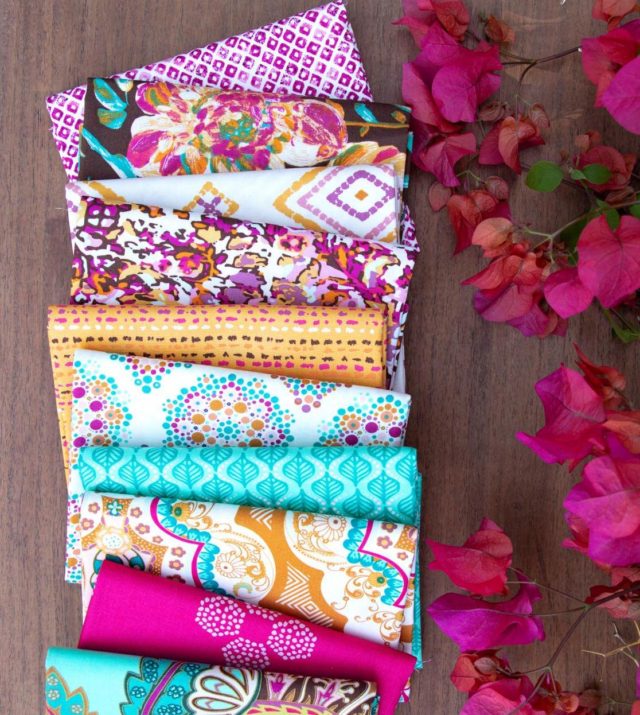
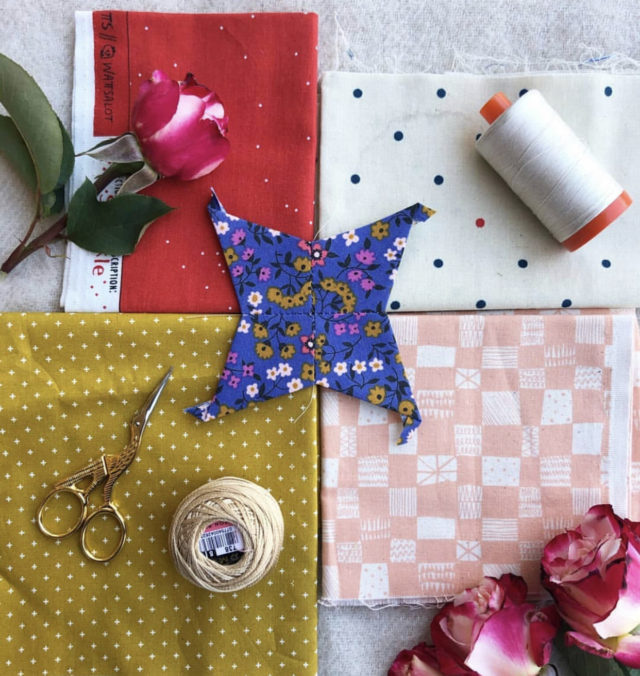
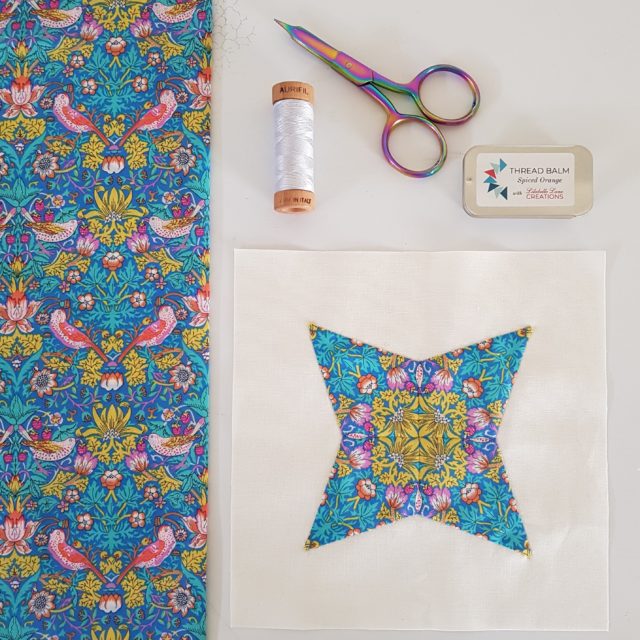
Leave a Reply